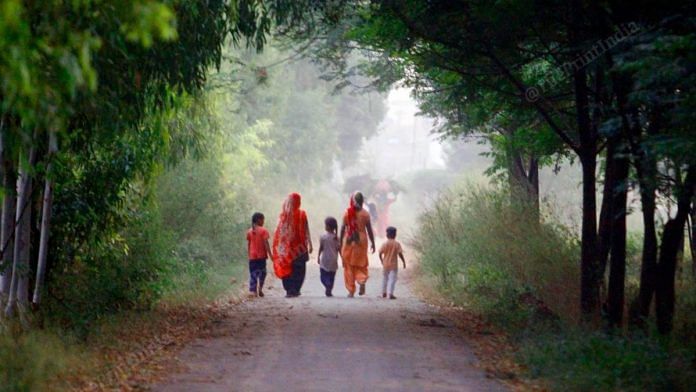New Delhi: India dropped two spots to 131 out of 189 countries on the Human Development Index (HDI) this year, according to a report prepared by the United Nations Development Programme. The country ranked 129 on HDI in 2019 and 130 in 2018.
Titled ‘Human Development Report 2020: The Next Frontier Human Development and the Anthropocene’, the survey report was released Tuesday.
The HDI is a combination of people’s life expectancy at birth, expected years of schooling, mean years of schooling and a country’s gross national income per capita.
With a total HDI value of 0.645, India was placed in the ‘medium human development’ group alongside nations like Iraq, Bhutan, Ghana, Nepal and Cambodia. Countries such as Sri Lanka, Maldives, Vietnam and China were part of the ‘high human development’ group. Malaysia and Japan made it to the ‘very high human development’ list.
Also read: India’s low hygiene gives it more immunity against virus, helps in Covid fight — CSIR study
Lesser life expectancy, greater gender inequality
The report said India had a life expectancy of 69.7 years in 2019, while that of Bangladesh, Nepal and Bhutan was 72.6, 70.8 and 71.8 years, respectively.
Nepal and Bangladesh ranked below India, at 142 and 133 spots, respectively, while Pakistan was placed at 154.
The survey also highlighted that India in 2019 had 12.2 years of expected schooling, 6.5 mean years of schooling and a gross per capita national income of $6,681 (Rs 4.9 lakh approximately). In 2018, India’s gross per capita national income was $6,829 (Rs 5.02 lakh approximately).
India was placed at 123 position in the gender inequality index. The report noted that the labour force participation rate of women in the country was 20.5 per cent, while it was 76.1 per cent for men. And only 13.5 per cent women held seats in Parliament.
The report also noted that difference in parents’ response toward girls and boys has led to higher malnutrition among girls. India, however, ranked fifth for installed solar capacity in 2019.
Achim Steiner, UNDP administrator, said in a statement: “Humans wield more power over the planet than ever before. In the wake of Covid-19, record breaking temperatures and spiraling inequality, it is time to use that power to redefine what we mean by progress, where our carbon and consumption footprints are no longer hidden.”
2019 report
In the 2019 HDI report, India ranked 129 out of 189 countries. This report had sought to measure a country’s HDI by analysing its advances in education, health and standards of living.
The 2019 report also acknowledged that a “new generation” of inequalities were emerging, driven by climate change and technology. It had warned how “…climate crisis is already hitting the poorest hardest, while technological advances such as machine learning and artificial intelligence can leave behind entire groups of people, even countries”.
At the time, UNDP’s India resident representative Shoko Noda had termed schemes such as Pradhan Mantri Jan Dhan Yojana and Ayushman Bharat “crucial” in ensuring development for all citizens.
Also read: Hunger could kill more people than the Covid pandemic in 2020



